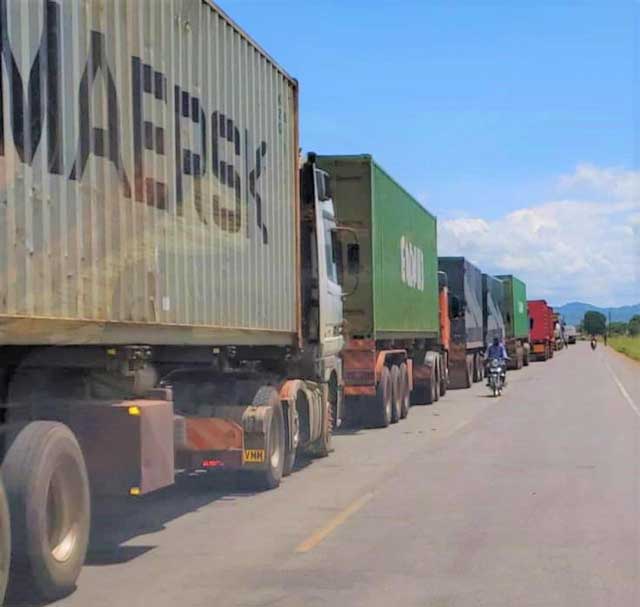
Arusha, Tanzania | THE INDEPENDENT | The regional economic blocs in Africa have agreed to harmonise regional and national road transport regulatory instruments in Africa, as they bid to reduce transport costs. At a 4-day workshop in Johannesburg, South Africa organised by the African Union Commission, the RECs examined how closely related and harmonized Africa’s cross-border road transport regulatory frameworks were.
The event supported by the European Union (EU)-funded Tripartite Transport and Transit Facilitation Programme, (TTTFP) also analysed best practices on policies and standards on road transport regulation. They also analysed proposals for developing a Vehicle Load Management (VLM) strategy aimed at ensuring harmonised vehicle overload controls over the roads within the entire continent.
They noted that harmonising road transport regulatory instruments is crucial for increased regional integration in Africa and a key step for the effective implementation of the African Continental Free Trade Area (AfCFTA). Efforts to ease transport and transport costs have met challenges, with even individual RECs themselves yet to achieve internal harmonisation.
In the East African Community, for example, there are differences in road levies from country to country, as well as the partner states charge varying rates depending on the origin and destination of a truck, which has been a major non-tariff barrier to trade. The EAC and the rest of Africa, have also so far failed to implement the single-airspace strategy for more than 10 years now.
In August 2022, the African Development Bank published the “Sustainable Market Access for African Road Transport” study report which analysed the main regulatory and non-physical barriers that impede a streamlined movement of vehicles and goods within and between the different RECs in Africa. It made several recommendations aimed to increase the efficiency of cross-border road transport, reduce its costs, and maximize the economic benefits of the transport infrastructure, in view of reducing the cost of trading across borders.
It concluded that the Multilateral Cross Border Road Transport Agreement developed within the TTTFP program is an important model to which the other blocs in Africa might well aspire, by creating similar inter-REC regulatory frameworks on cross-border road transport.
Eric Ntagengerwa, Acting Head of the Transport and Mobility Division, emphasised that harmonising road transport regulatory instruments helps to realise regional integration and aid trade facilitation by laying the groundwork for the effective implementation of the African Continental Free Trade Area (AfCFTA). “Road transport facilitates roughly 80% of trade on the continent, and demand is expected to rise significantly in the coming years, aided by AfCFTA, which is why we need to increase the efficiency and capacity of transportation infrastructure and services for the movement of goods and people within and beyond borders,” he said.
This, in turn, will stimulate economies by allowing African enterprises to expand and enter new markets, increase productivity, generate jobs, accelerate industrialisation, and contribute to the achievement of Agenda 2063 aspirations, goals, and objectives. Ms. Petra Pereyra, EU Ambassador to Botswana and SADC, gave the EU’s experience in integrating transport systems across the EU region.
“To enable this level of intra-European mobility, we had to work tirelessly for decades to remove regulatory impediments to transport and trade in the EU. And this is the type of hard work that the TTTFP has been conducting for the past five years in collaboration with 25 SADC, EAC, and COMESA Member States,” she said. COMESA Director of Infrastructure and Logistics, Baptiste Mutabazi, said that the three RECs were working toward “the broader goal of accelerating continental economic integration, boosting economic growth, reducing poverty, and achieving sustainable economic development.”
The discussions were based on the recently adopted Tripartite Vehicle Load Management Agreement (VLMA), Multilateral Cross Border Road Transport Agreement (MCBRTA), and Model Laws and Regulations by the Tripartite Council of Ministers of COMESA, EAC, and SADC. The report also notes that the qualitative criteria that the MCBRTA introduces for access to the road transport profession should be adopted by all the African RECs by incorporating them in harmonised regional or multi-regional road transport regulations.
The final step of such a process should be a single continental framework on cross-border road transport to be adopted at the continental level with the support of the African Union (AU).
****
URN
 The Independent Uganda: You get the Truth we Pay the Price
The Independent Uganda: You get the Truth we Pay the Price



